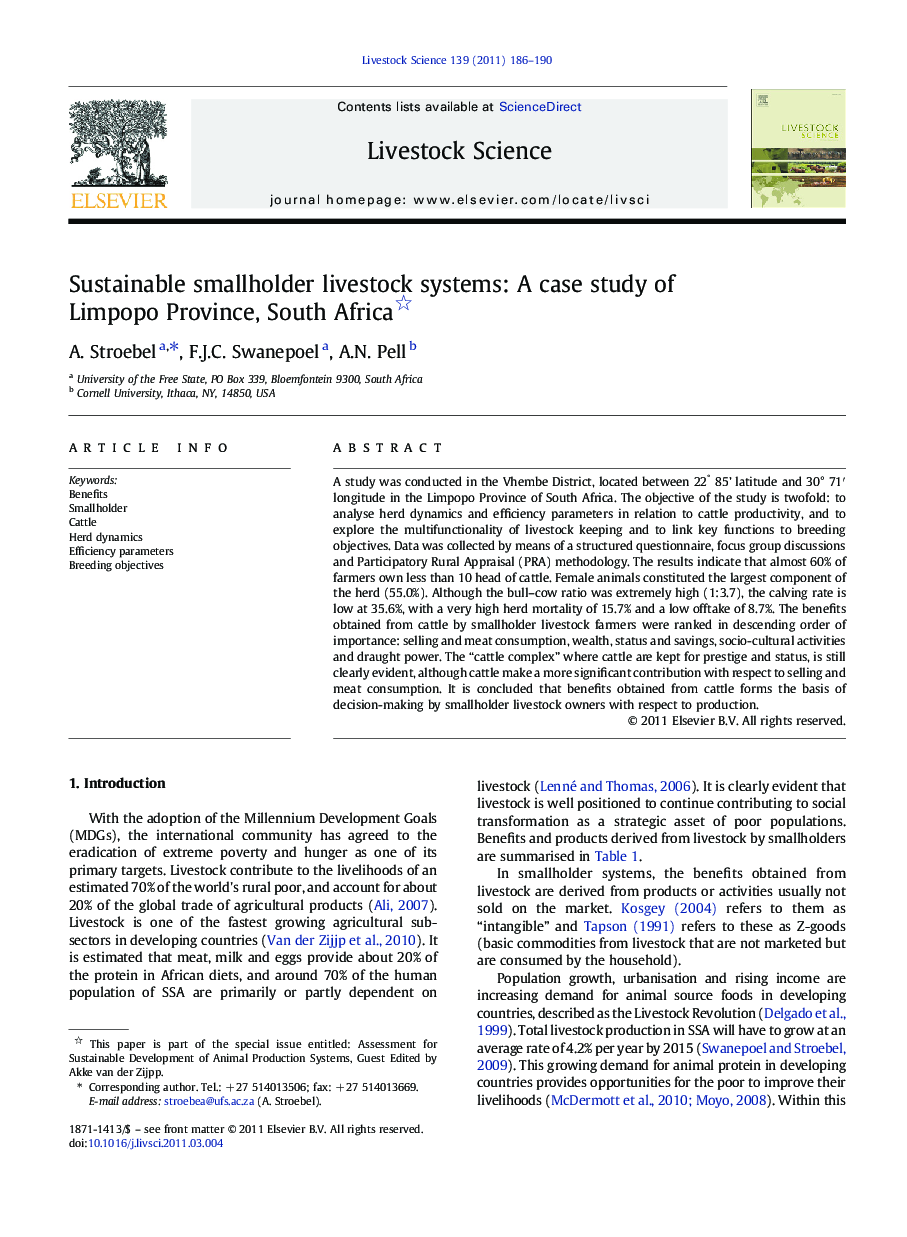| Article ID | Journal | Published Year | Pages | File Type |
|---|---|---|---|---|
| 2447468 | Livestock Science | 2011 | 5 Pages |
A study was conducted in the Vhembe District, located between 22° 85’ latitude and 30° 71′ longitude in the Limpopo Province of South Africa. The objective of the study is twofold: to analyse herd dynamics and efficiency parameters in relation to cattle productivity, and to explore the multifunctionality of livestock keeping and to link key functions to breeding objectives. Data was collected by means of a structured questionnaire, focus group discussions and Participatory Rural Appraisal (PRA) methodology. The results indicate that almost 60% of farmers own less than 10 head of cattle. Female animals constituted the largest component of the herd (55.0%). Although the bull–cow ratio was extremely high (1:3.7), the calving rate is low at 35.6%, with a very high herd mortality of 15.7% and a low offtake of 8.7%. The benefits obtained from cattle by smallholder livestock farmers were ranked in descending order of importance: selling and meat consumption, wealth, status and savings, socio-cultural activities and draught power. The “cattle complex” where cattle are kept for prestige and status, is still clearly evident, although cattle make a more significant contribution with respect to selling and meat consumption. It is concluded that benefits obtained from cattle forms the basis of decision-making by smallholder livestock owners with respect to production.
